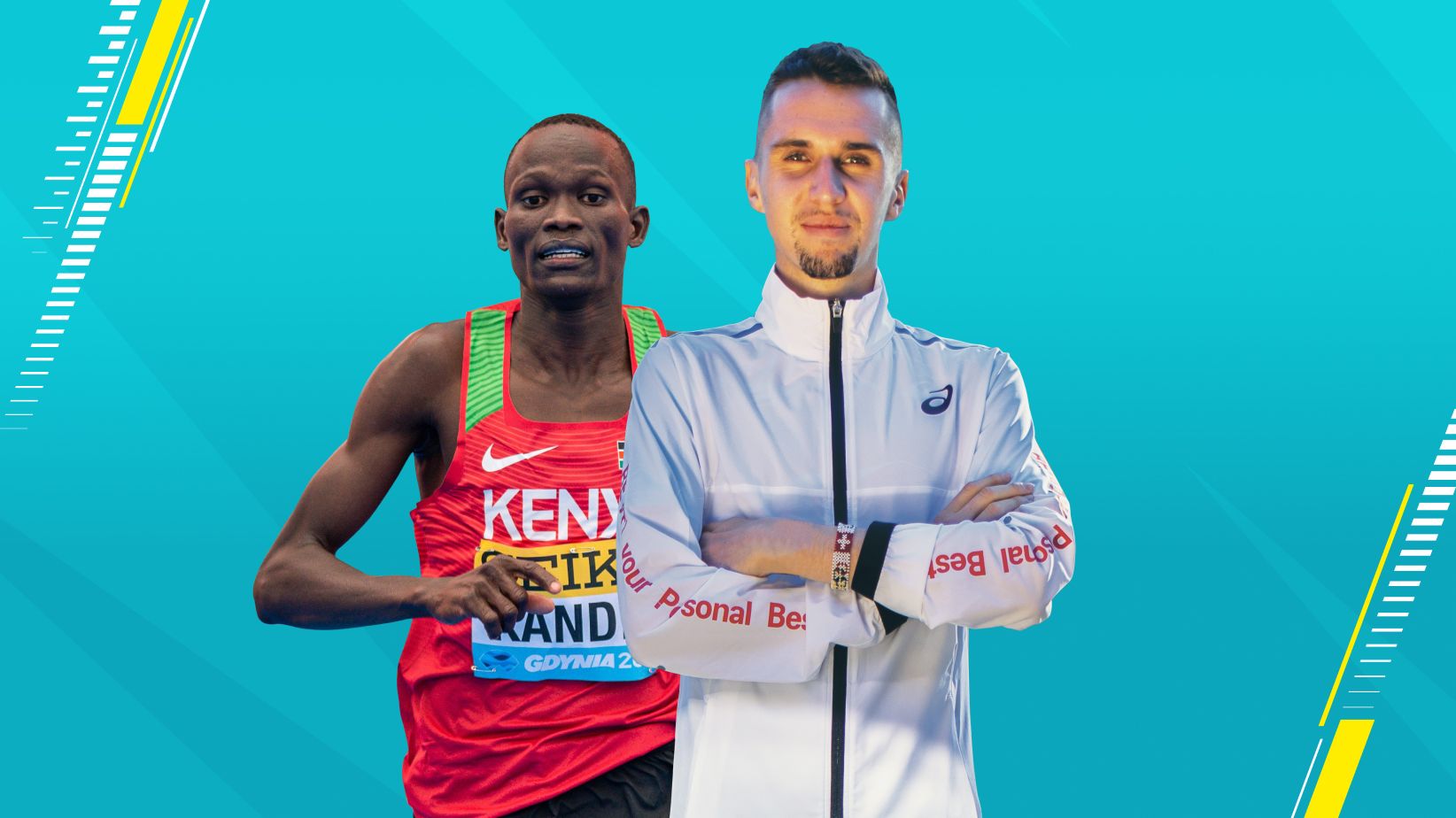You want to prepare specifically for a short yet fast run? Then we have the most important tips for you.
When it comes to short distances, the motto is quite simple: if you want to speed up your basic running pace, then you also need to run faster than usual in training. If you only ever run at the same pace, you also won’t be able to run at a different pace in the competition. This means that you need to give your body a wide variety of stimuli during your preparation. Only when the body is challenged again and again do the signs of adaptation become apparent, which are ultimately noticeable in faster running times.
Moderately increase your running training
Training at higher levels of intensity and speed (interval training, fast speed variation) particularly places significantly more strain on the musculoskeletal system than constant continuous running training at a moderate speed and should therefore be done in doses at the start. In running, where the strain on the tendons, ligaments, and joints is considerably higher than when cycling or swimming, for instance, it is crucial that the training exertion is not increased by more than 10 percent each week and the everyday training needs to include an athletic program with strength gymnastics and stretching.
Alternate the levels of intensity
A very relaxed continuous run, relaxed continuous run, medium (swift) continuous run, faster continuous run, relaxed, medium and fast speed variation, sprint runs, mountain runs, fast interval training, intensive interval training – there are countless forms of training that runners can use. Depending on what you choose, you need to moderately exert yourself at different intensity levels. What is important is that you take advantage of the entire “menu” and complete the forms of training at all levels of intensity. For a 10-km best time, it is essential that you regularly do training units at the intensity levels 3, 4 and even 5 in advance. The intensity levels are subdivided as follows:
Intensity level 1 = very slow space = 130–150%*
Intensity level 2 = Slow pace = 120–130%*
Intensity level 3 = Medium to fast pace = 110–115%*
Intensity level 4 = Fast pace = 100–110%*
Intensity level 5 = Very fast pace = 97–100%*
* The percentages refer to the percent value of your personal average kilometre time. To find this out, you can do a simple test run (see below "HOW YOU CAN DETERMINE YOUR RUNNING PACE!").


Prepare for a 10-km race in 12 weeks
Weeks 12-9: If you have been training around three times a week, then only do one hard training unit (level 4-5) a week during the first 4 weeks, if you already train around five to six times a week, then you can do two. Check how you cope with the hard training units both with respect to your musculoskeletal system as well as fatigue/recovery. The hard units should not be too long to start with (around 40 min up to a maximum of 60).
*Example of an intensive unit in the weeks 12-9:
- 60 min speed variation: increase the pace for 30-90 sec until the exertion reaches intensity level 4. In between, slow down again to intensity level 2 for about 2 minutes.
Weeks 8-5: In the second 4 weeks, you can increase this to two intensive units**. Make sure you take a rest day after an intensive unit. You can also repeat the test run to confirm and check whether you need to adjust your reference values.
**Examples of two intensive units in the weeks 8-5:
- Track interval training: warm-up run, ABC running drills, then 10 x 400 m at level 3, every 400 m take a relaxed jog-trot break. Wind down for 15 min.
- Crescendo run for around 10 km: warm-up run, then 3 x 3 km increasing the pace each time, first 3 km at level 2-3, second 3 km at level 3, third 3 km at level 4, wind down.
Weeks 4-1: The last 4 weeks are divided up. The first two weeks involve the usual varied training including intensive units, then the training is reduced and the intensive units*** become shorter (but in return can be really fast). In the last week before the competition, only do relaxed and short training units incorporating slopes and sprints to maintain your liveliness.
***Example of a short intensive unit:
- Track interval training: warm-up run, pyramid 200 m, 400 m, 600 m, 800 m, 1000 m, 800 m, 600 m, 400 m, 200 m, take a break for 400 m and jog-trot totally relaxed. Intervals, each at level 3 (beginners can omit the 1000 m), wind down for 15 minutes then stretch.
————————————
THIS IS HOW YOU CAN DETERMINE YOUR RUNNING PACE!
It doesn’t necessarily need to be an extensive performance test – even with a simple 30-minute test run you can apportion your actual performance capability, running pace and thus the different paces and levels of intensity that you need to increase your pace. After a 10-minute warm-up, run on a flat route (this is best done on a 400-m track or using a GPS sports watch to calculate the distance) for 30 minutes as consistently and quickly as possible and measure how many kilometres you run.
You can then calculate your average time per kilometre and set this as your 100 percent actual performance capability. The tempo you achieve or the kilometre average corresponds approximately to your anaerobic threshold. The aerobic/anaerobic threshold refers to the flowing transition in which sufficient oxygen is no longer available to maintain the metabolic processes of the body.
Calculation example of the kilometre time including training forms. You run 6 kilometres in 30 minutes. Your kilometre average is 5 minutes. This results in the following levels of intensity or kilometre times and the associated running training forms:
Intensity level 1: 6:30–7:30/km Very light continuous run (long jog)
Intensity level 2: 6:00–6:30/km Light continuous run
Intensity level 3: 5:30–5:45/km Medium (swift) continuous run, relaxed/medium speed variation
Intensity level 4: 5:00–5:30/km Fast continuous run/ swift intervals, fast speed variation, slopes, mountain run
Intensity level 5: 4:51–5:00/km intensive interval, short competition
————————————
Source Datasport





